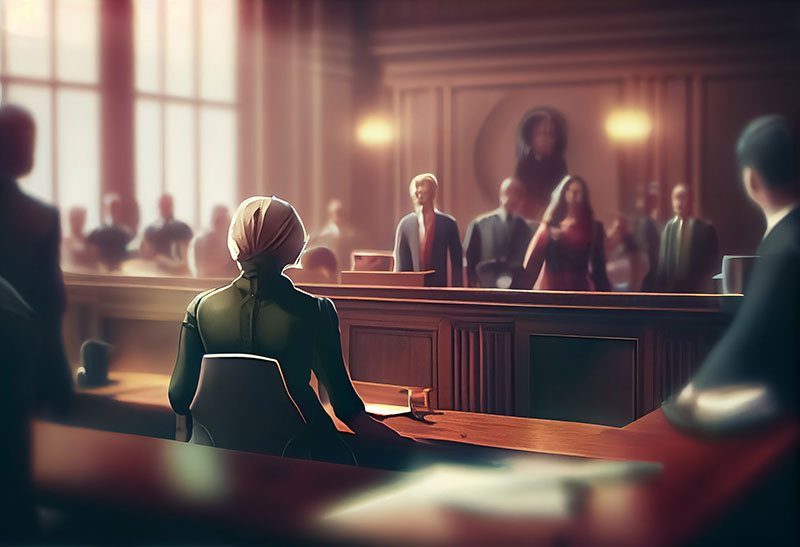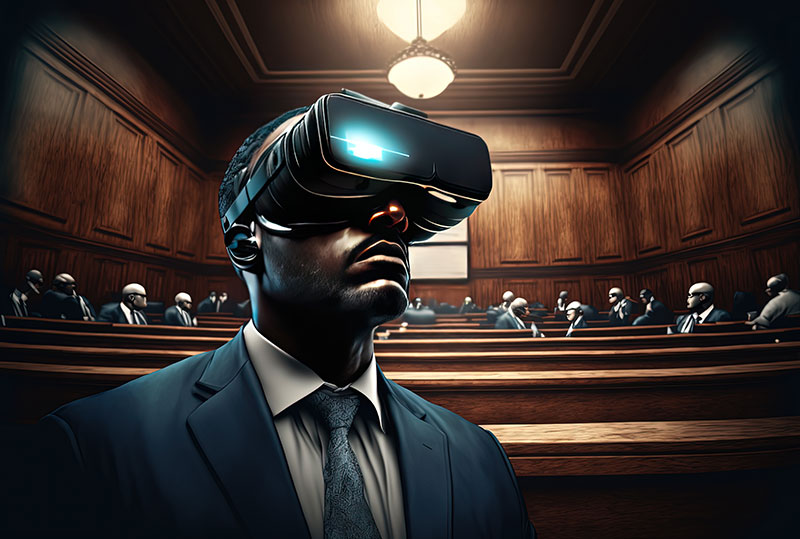The Trial of the Chicago Seven: A pivotal moment in the U.S.’s civil rights and anti-war movements, the trial of the Chicago Seven saw intense emotions, fervent arguments, and dramatic confrontations. The illustrations from this period encapsulate the era’s spirit, echoing the broader societal upheavals taking place outside the courtroom while subtly communicating the subtext – the crime at the center, the lawyers battling it out, the weight of the evidence, the roles of the witnesses, and the path to appeal.
Behind each of these iconic illustrations lies the talent and vision of dedicated courtroom artists. Their ability to capture not just the scene but the very ethos of these monumental legal proceedings has ensured that these moments remain etched in the collective memory. Through their art, these trials are immortalized, reminding us of the power of justice and the profound impact of pivotal legal moments on the course of history.
As our world becomes increasingly digitized, many traditional crafts and professions face existential questions about their relevance and sustainability. Courtroom illustration, a venerable art form rooted in the pre-digital era, is no exception. But does the advent of live streaming, high-definition cameras, and instant online updates spell the end for these artists? Or does it underscore the irreplaceable role they play in creating a lasting record of our courts, our lawyers, and our trials, reflecting the human drama that even the most precise digital evidence cannot capture?
For example, courtroom illustrators have the unique skill of capturing the judges’ demeanor along with the anxious courtroom scenes.
Indeed, technology offers immediacy. Cameras capture what’s there, but an artist captures the essence – the tension in the courtroom, the subtle emotions of the participants, and the drama of a pivotal testimony. In particular, courtroom sketch artists have the unique ability to capture intricate details of these interactions, such as legal animations.
In various jurisdictions, courtroom scenes cannot be photographed or filmed. This is where forensic animations come into play, offering a detailed and accurate representation of crime scenes or events that can be presented as evidence in court.
Furthermore, there remain many courtrooms where cameras are prohibited, safeguarding the demand for artists. However, the digital age isn’t merely a challenge; it offers opportunities. Digital art tools and platforms can empower courtroom sketch artists to produce work faster and distribute it more widely. There’s also the possibility of integrating traditional sketching with augmented reality or virtual reconstructions to provide an immersive courtroom experience.
In essence, while the tools and platforms might evolve, the core of courtroom illustration – capturing the human drama of justice – remains timeless. As long as there are stories to be told and emotions to be conveyed, there will always be a place for the artist’s hand, even in the most technologically advanced courtroom. The future of courtroom sketch artists, thus, is not a tale of obsolescence but one of adaptation and evolution.
Courtroom illustrations provide a unique perspective into legal proceedings, capturing not just the events but also the underlying emotions and pivotal moments. For example, a careful sketch of judges presiding over a scene can reveal multitudes. Serving as both a historical record and a window into the legal world, these artworks help shape perceptions, evoking emotions and preserving significant legal moments.
How has courtroom art evolved over the years?
Historically, in the absence or restriction of photography, artists played a crucial role in documenting courtroom events. Over time, as the art form’s importance was realized, techniques grew more sophisticated, and artists began focusing on the ambiance and emotional undertones rather than just accuracy. Even with modern camera technology, the essence captured by adept courtroom sketch artists remains irreplaceable.
Courtroom artists must not only accurately depict the scene but also encapsulate the atmosphere’s intangibles. They need to select a suitable medium, ensure they get a balanced scene from their vantage point, and adhere to a silent code of ethics that demands impartiality, avoidance of sensationalism, and respect for privacy.
Courtroom art plays a pivotal role in shaping public perception, especially in high-profile cases. A particularly emotive sketch can influence public discourse, eliciting emotions like sympathy or outrage. These illustrations serve as a unique, artistic perspective on justice’s unfolding and often become symbolic of the cases they represent.
Despite the digital age’s challenges, courtroom illustration’s essence remains timeless. While live streaming and high-definition cameras offer immediacy, an artist captures the drama’s depth and emotions. Digital art tools present new opportunities for courtroom sketch artists. As long as there are stories to be told, there will always be a place for the artist’s hand, making courtroom illustration an evolving and enduring art form.




